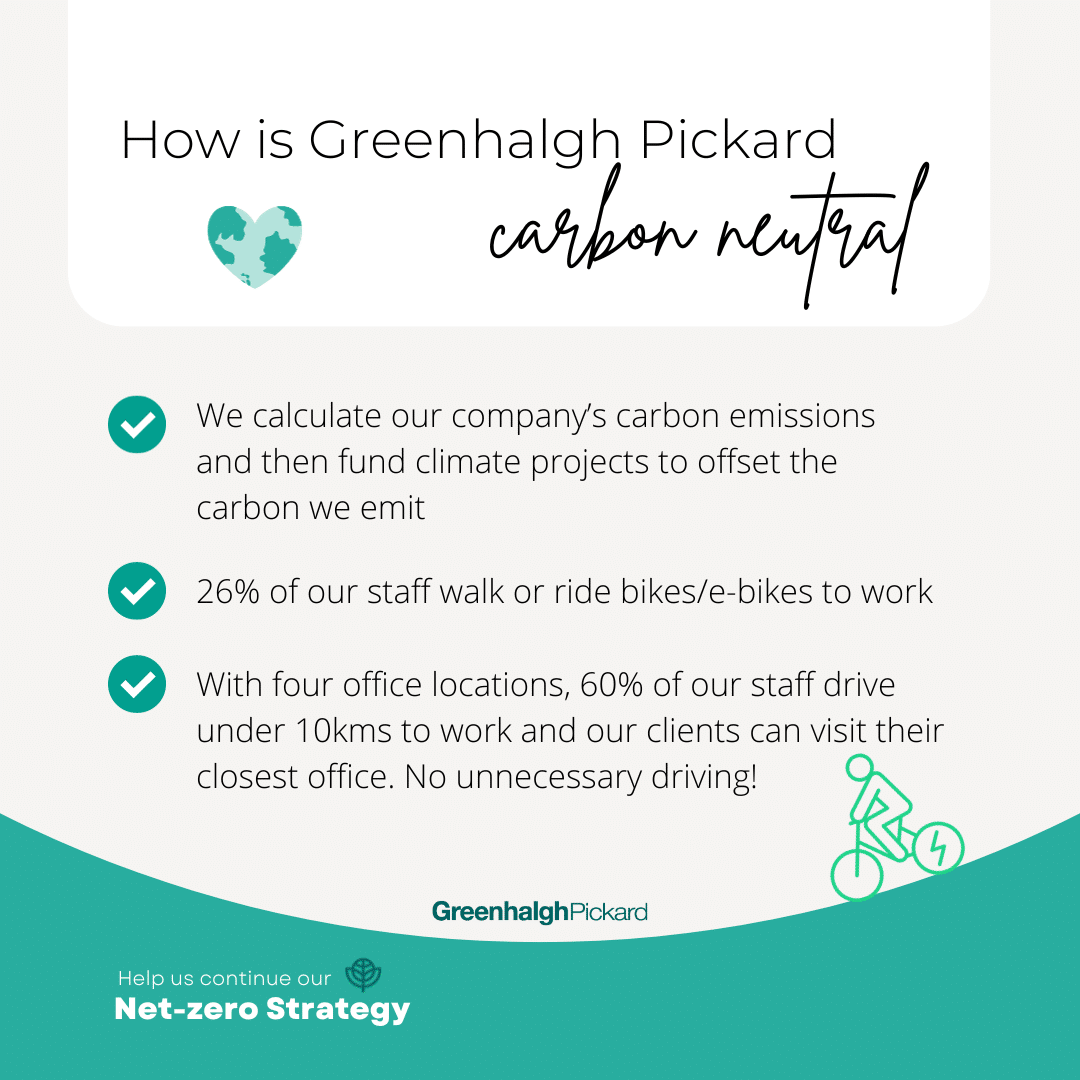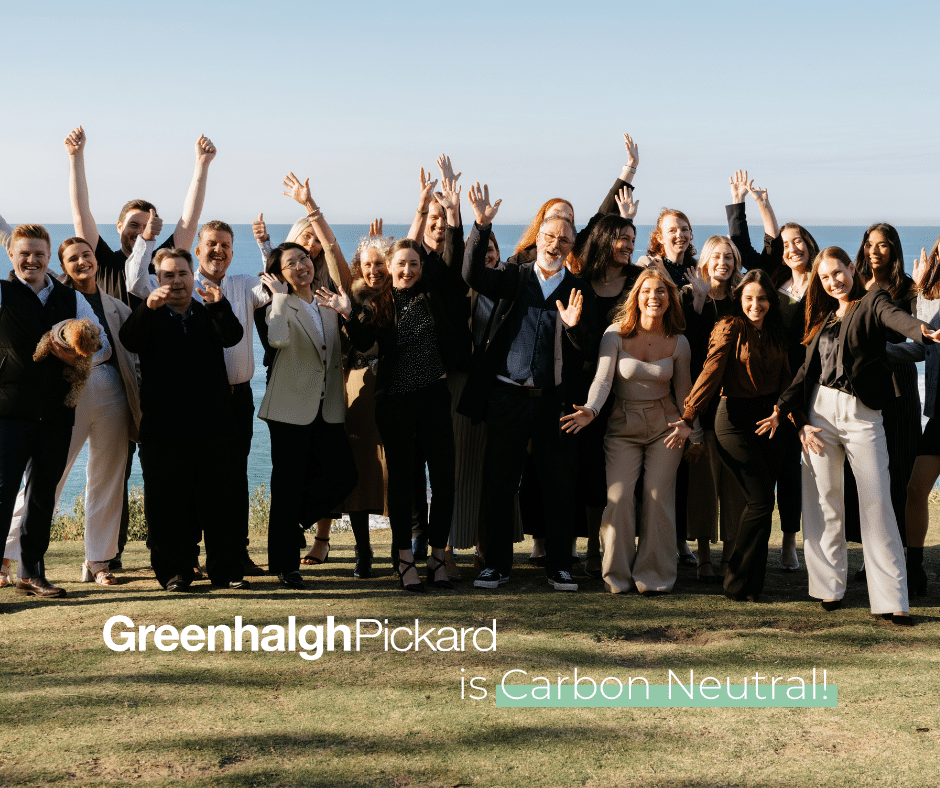Greenhalgh Pickard is carbon neutral for another year! But what is carbon neutrality and how can your business become carbon neutral?
In an era where climate change poses an increasingly urgent threat to our planet, the concept of carbon neutrality has gained significant attention. Carbon neutrality, also known as climate neutrality or net-zero carbon emissions, is a vital strategy in the global effort to combat climate change and create a more sustainable future for generations to come. Greenhalgh Pickard is a carbon-neutral company that encourages staff and clients to act sustainably and support companies who share our eco-conscious values.
What is Carbon Neutrality?
Carbon neutrality refers to achieving a balance between the amount of greenhouse gases (GHGs) emitted into the atmosphere and the amount removed from it. GHGs, primarily carbon dioxide (CO2), methane (CH4), and nitrous oxide (N2O), trap heat in the Earth’s atmosphere, leading to global warming and climate change.
To become carbon neutral, the total GHG emissions produced must be offset by actions that remove an equivalent amount of GHGs from the atmosphere or reduce emissions to zero. This is typically achieved through a combination of strategies, including:
- Emissions Reduction: Implementing energy-efficient technologies, transitioning to renewable energy sources, and adopting sustainable practices to reduce carbon emissions from various sources like transportation, industry, and agriculture.
- Carbon Offsetting: Investing in projects that capture or store carbon, such as afforestation (planting trees) and reforestation, carbon capture and storage (CCS) technologies, and supporting renewable energy projects.
- Carbon Credits: Purchasing carbon credits or offsets to compensate for emissions. These credits are generated from projects that reduce GHG emissions elsewhere, effectively cancelling out the emissions produced.
How to Achieve Carbon Neutrality
Assess Emissions: To become carbon neutral, individuals, organisations, and countries must first assess their current carbon footprint by identifying sources of emissions.
Set Reduction Goals: Establish clear and measurable targets for reducing emissions. This may include transitioning to clean energy sources, improving energy efficiency, and adopting sustainable practices.
Invest in Carbon Offsetting: Support carbon offset projects that capture or reduce emissions equivalent to those produced. Consider investing in renewable energy, reforestation, or methane capture initiatives.
Monitor and Report: Continuously monitor emissions and progress toward reduction goals. Transparent reporting is essential for accountability and improving strategies.
Advocate for Policy Change: Advocate for government policies and regulations supporting carbon reduction and offset initiatives at local, national, and international levels.

Why Carbon Neutrality Matters
- Mitigating Climate Change: Carbon neutrality is crucial for limiting global temperature rise to well below 2 degrees Celsius above pre-industrial levels, as outlined in the Paris Agreement. Failing to achieve carbon neutrality would exacerbate climate-related disasters, such as extreme weather events, sea-level rise, and food scarcity.
- Preserving Ecosystems: A balanced carbon cycle is vital for the health of our ecosystems. By reducing carbon emissions and enhancing carbon removal efforts, we can protect biodiversity and prevent the destruction of natural habitats.
- Economic Benefits: Transitioning to a carbon-neutral economy can stimulate innovation, create green jobs, and enhance economic resilience in the face of climate-related challenges.
How Can My Business Become Sustainable?
Greenhalgh Pickard engaged Trace for another year, calculating our company’s emissions and offsetting 100% of them to become carbon neutral.
Carbon neutrality is not merely a buzzword; it’s a vital strategy in the fight against climate change. Achieving carbon neutrality requires collective efforts from individuals, businesses, and governments worldwide. We encourage you to take meaningful steps towards a more sustainable, resilient, and carbon-neutral future for our planet and future generations.
Trace helps business calculate their carbon emissions and offset them through sustainable projects. Check out Trace to learn more.
You’re on your way!
Follow our team on our climate action adventure on social media!

